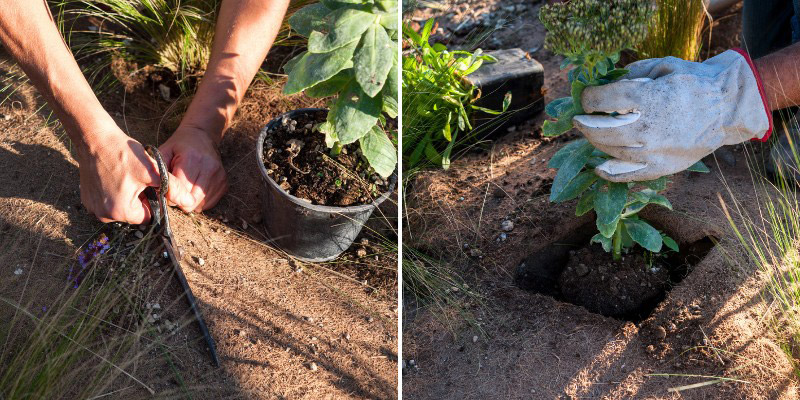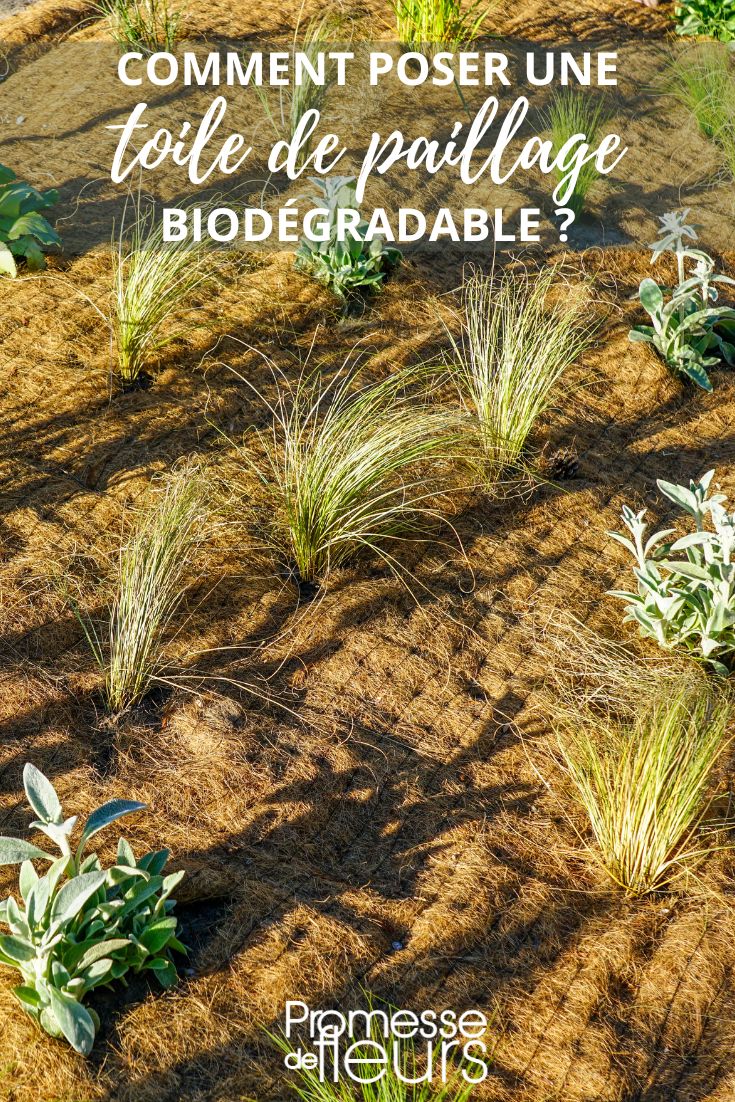Biodegradable mulch fabric is an ecological and practical solution to prevent weed growth, retain soil moisture and improve garden fertility. It is an alternative to traditional organic mulches as well as to conventional synthetic mulching fabrics. Discover in this tutorial the advantages of biodegradable mulch fabrics and how to install them in the garden!
What is a biodegradable mulch fabric?
A biodegradable mulch fabric is a material made from organic fibres such as jute, hemp, flax, coir fibre, or even wool! Unlike plastic mulching fabrics, it naturally decomposes in the soil over time, thereby enriching the soil with nutrients.
Biodegradable mulch fabrics are available in various formats: they can be on a roll, to cover an entire row of plants, but also as square tiles or round collars, placed individually at the base of a plant, or as a large square, useful for example for a vegetable bed.
Also see our advice sheet: "Flax, hemp, jute, wool… What are these new biodegradable mulch fabrics?"

Why install a biodegradable mulch fabric?
Mulching soil is important so it is not left bare. Indeed, bare soil is prone to erosion, dries out quickly and becomes less fertile. Mulching reduces weed growth, preserves soil moisture and protects soil from erosion. However, compared with organic mulch, installing a mulch fabric is more efficient and quicker to put in place for large areas.
It is particularly suitable for new plantings, rather than for well-established specimens. Biodegradable mulch fabrics are much more ecological than synthetic fabrics! They are more breathable, letting rainwater through, while improving soil structure and fertility as they decompose. Some also act as good thermal insulators, helping to improve plant hardiness slightly.
Required equipment
To lay a biodegradable mulch fabric, you will need the following items:
- A spade or broadfork to aerate and loosen the soil before laying
- A hand cultivator or rake to level the soil
- A biodegradable mulch fabric (choose size according to area to cover)
- A pruning shear or scissors to cut the fabric if necessary
- Fixing staples

How to do it?
Follow these steps to correctly install your biodegradable mulch fabric:
- Before laying the fabric, it is important to prepare the ground. Remove weeds and their roots, as well as large stones, and work the soil with a spade or spade-fork. You can also add compost to enrich the soil.
- Level the soil using a cultivator and a rake.
- Unroll the biodegradable mulch fabric over the prepared area, making sure it completely covers the zone and overlaps the edges by about 20–30 cm. If necessary, cut the fabric with a pruning shear or scissors to adjust its size.
- Using fixing staples, secure the biodegradable mulch fabric to the soil. Place a staple every 30 cm approximately, taking care to keep the fabric taut.
- If you need to lay several sheets of fabric together, overlap them by about 20 cm before securing with staples.
- Bring a little soil back over the edges of the fabric.
- Cut cross-shaped holes in the fabric at the positions of the plants you want to install. Make sure the holes are large enough to allow plants to grow without being restricted by the fabric.
- All that remains is to dig the holes, plant the plants and water.

































Comments